This week’s story is from Abby, our second oldest daughter. She is a lover of plants and nurturing, of comfort and caring.
You first notice the color change. Lush greens are fading to brown, the green color trickling down out of the tops of the grass and down into the roots. You can still see green, if you walk around and pick up a handful of grass, a bouquet mix of orchard grass, clover, alfalfa, sainfoin, and bluegrass. Looking out across the pasture, the grass is bent over, wind tousled, like a toddler’s hair. I know. I have a toddler.
Color was stolen from us this year. We had a sudden hard frost in early October, before the aspens and cottonwoods along our river had turned color. Green leaves changed directly to brown (without passing “go”, as you might say). The winding river bottom, which should have been shrouded by resplendent gold and copper leaves, was instead a disappointing ashy green gray.
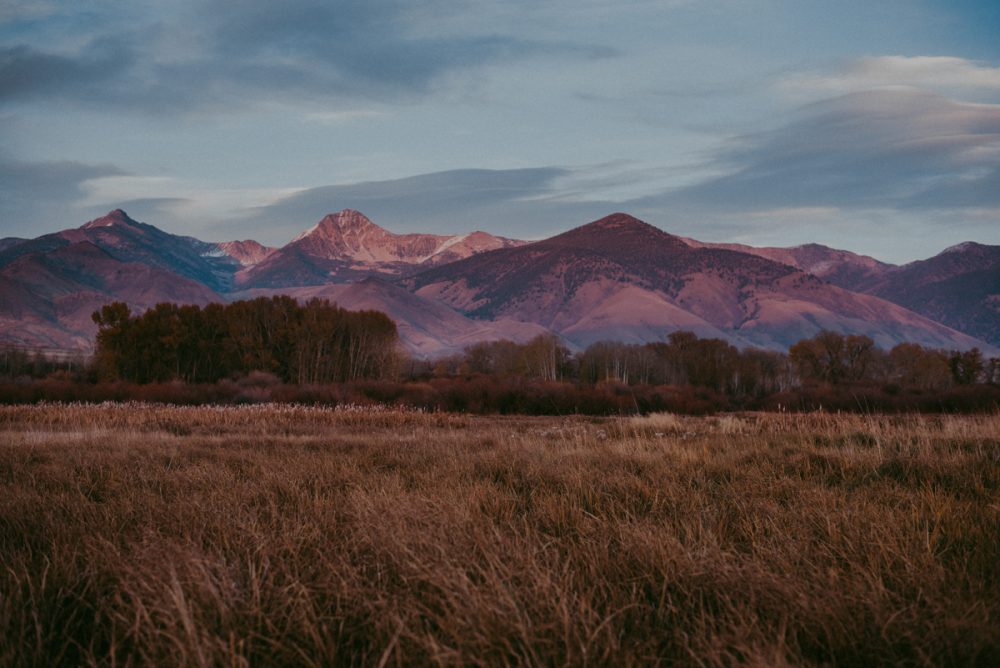
The blackbirds are making different sounds. Perched among the cattails, frothy with silk, they make the call you hear only in fall and spring. “Hurry up,” they seem to say.
We might be disappointed, but we aren’t worried. Every year is different in this country.
Last winter was a mild one, scarcely dropping below zero for more than a week or two. The snow was a skiff on the ground. Tiny spinach plants, planted in August of 2018, survived the winter and sprouted up in late March. By April, Ethan and I were gathering handfuls for the frying pan.
In this, the final week of October, we are eating red tomatoes out of the garden. They were coddled under a plastic hoop house all summer, with recycled vinegar jugs full of water that served as heat-holders during our 50-degree nights. It is satisfying that the labor of my hands, the dirt under my fingernails, produces food.
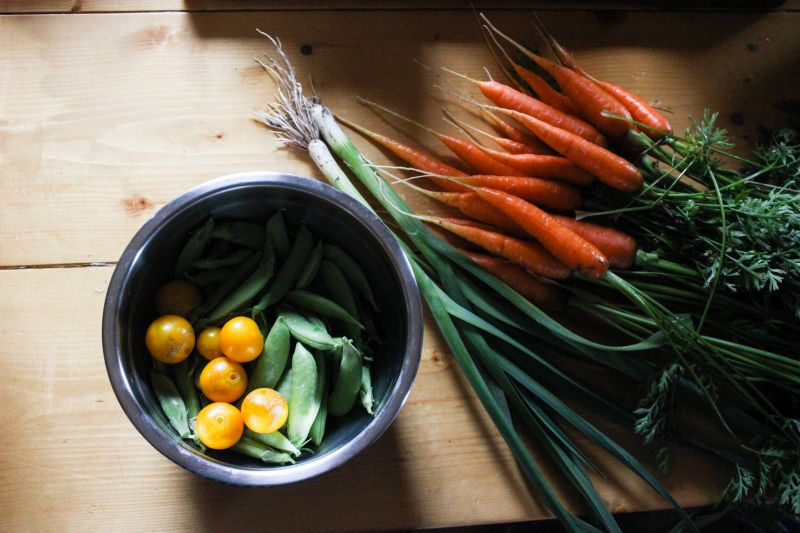
Gardening in this country is a kind of Russian roulette. If you plant too early, you might be defeated by a May frost. We’ve had snow in June! If you’ve planted too late, the single frost in the last week of August may haunt you. Homegrown tomatoes are the luxury of kings.
I picked them green, desperately, as the northern, fall-bearing wind howled through holes in my old sweater.
I called my mom. “My house is too dark,” I told her. “Can I fill your southern window with my green tomatoes?”
In their typical spirit of ingenuity, my parents had built a solar-collecting atrium on the front of their log home. This series of windows houses my mom’s cadre of houseplants. Ethan recognizes some of them from his childhood in Florida. There, they grow outside. Here, a double pane of window glass, frantically gathering 9 hours of winter sunlight, protects them from instant death.
I showed up at the ranch with 2 paper sacks of green tomatoes and spread them in trays next to my Mom’s geraniums. That was two weeks ago. Despite the occasional tomato that starts to go off and gets sorted into the chicken bucket, we’ve been eating as many fresh tomatoes as we want. I am giddy.
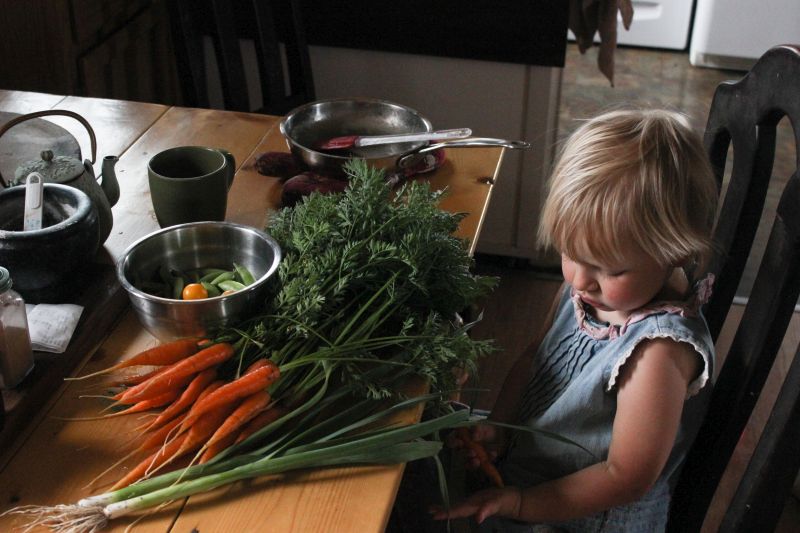
My youngest daughter just turned a year old. This time last year, I was very disappointed in myself because her birth fell just about the time that the ground froze, so I couldn’t get all my carrots and beets out. Have you ever chipped at a half-frozen carrot, in full-frozen ground? That is the moment you start to get very envious of people in warmer climates than you.
This short-season conundrum baffles Mom (Caryl) and I every year.
Painstakingly, (and terrifyingly, since parts of it involved a ’66 Case backhoe with no brakes and me driving it) Dad and I built terraced flowerbeds out of rocks for Mom. That was four years ago. Since then, she has been gradually filling these flowerbeds with perennial plants. Not only are the flowers a source of great beauty in the summer months, they also contain a flurry of activity.
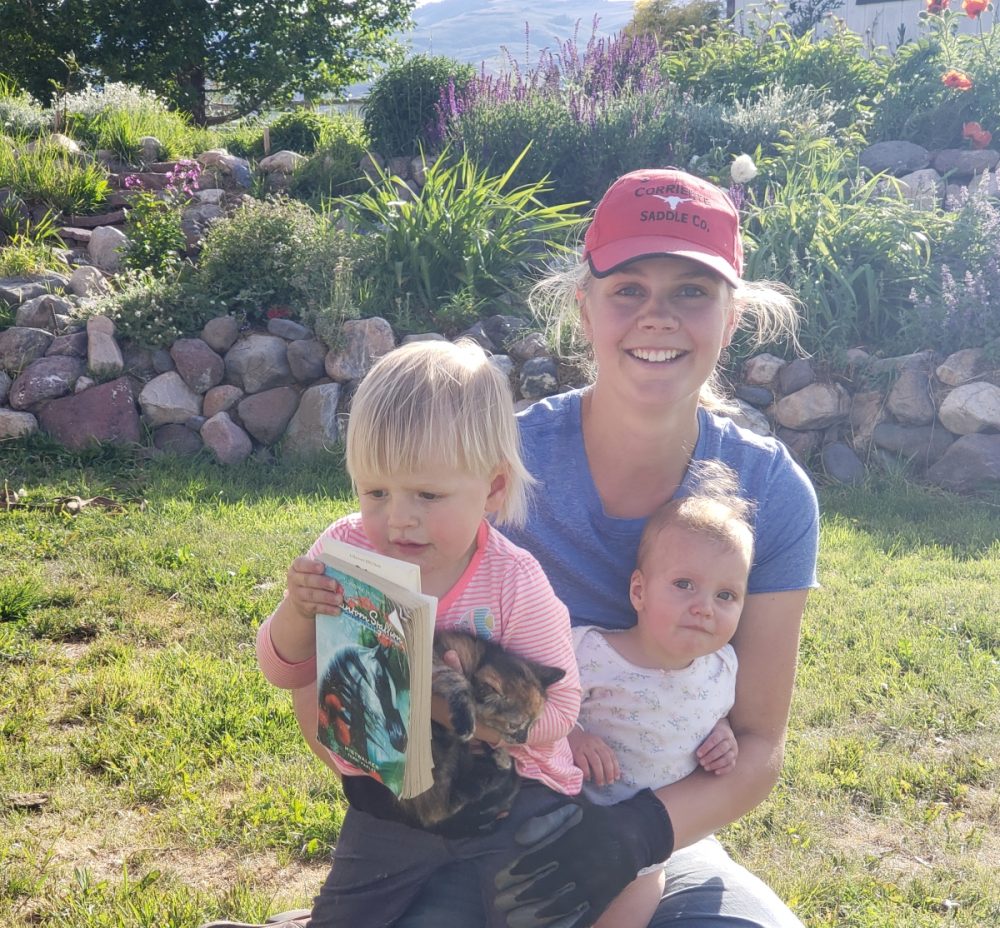
Bending down among the plants to weed out grass, I see hundreds of honeybees (they like Nepeta the best) going about their business. Little black ants crawl up the stems of the peonies and onto the unopened blooms. I had heard that ants help the blooms to open, and then I read that ants are fiercely protective of their food source (in this case, peony nectar), and will drive off or attack anything that threatens it. Apparently, the ants benefit the peony by keeping other plant-eating insects away! Interesting, when you get down in the weeds and look around.
In this perennial garden, you will find daisies, phlox, echinacea, hops, the renegade sagebrush which we did not plant, juniper, spiraea and potentilla. Many of these are domesticated versions of wild plants that we can find on the ranch or in our surrounding hills. Many are medicinal. I guess that’s what happens when you are in the garden of a native plant ecologist.
Mom knows each plant by their Latin name, which she can rattle off as quick as ABC’s. She has a little more difficulty translating them into their common names. What I remember about Latin from my Classical home-school education can almost be summed up like this: Sum Agricola. I am a farmer.
I inherited her love for plants. It is easily compared to mothering instinct, plain and simple. Tucking your plants in for cold nights is like tucking in little children. There is gardener-guilt, which occurs whenever you find your garden with cracked, drying soil and drooping plants. We caretake our plants like our children, pulling out the weeds when we find them, giving them good food, and each time trying to do better, trying to raise them up to be good, strong and healthy.
In the fall, it does feel a bit like goodbye. Each fall I clear out my raised beds, weed them, and cover them with hay. Mom and I tuck all the flowers into hay, six or eight inches deep, and trim off the heads of everything. It is done. It is over. Another year of glorious color, of wealth, of growth, is at its end.
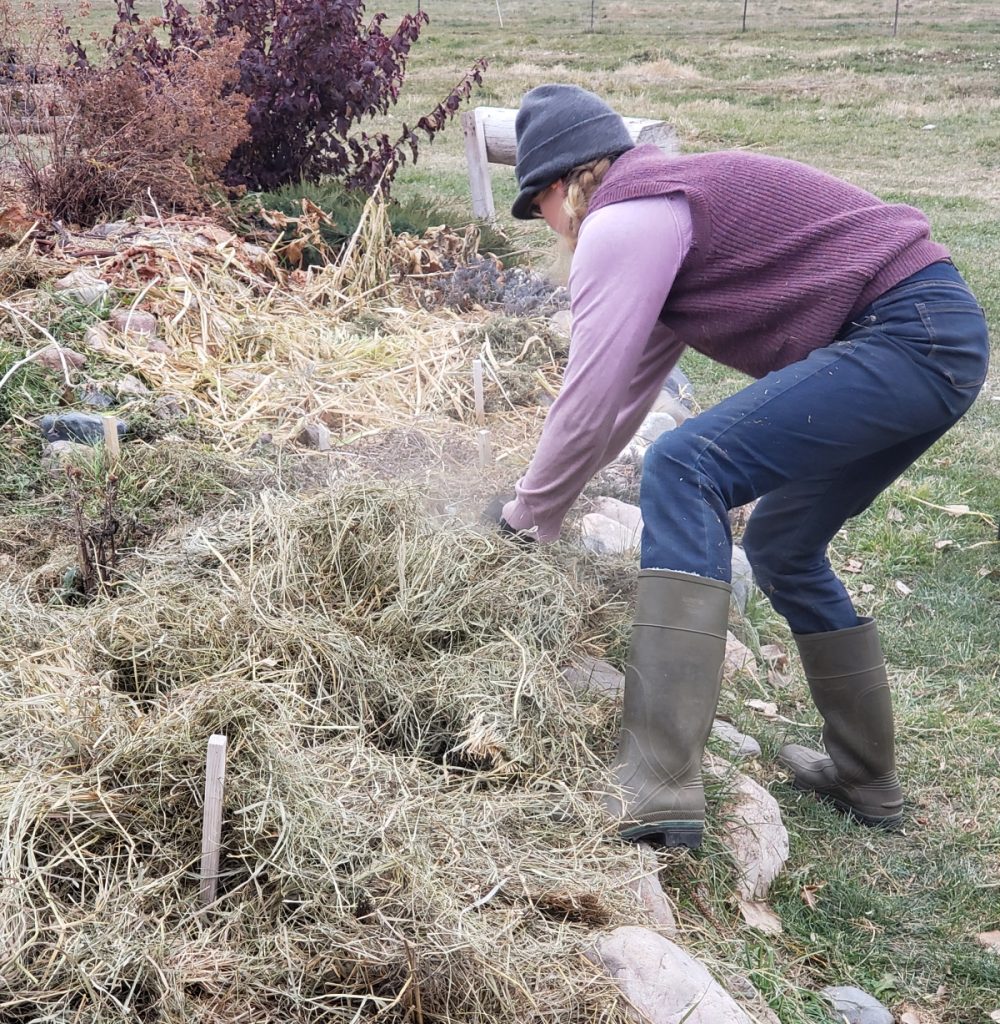
It’s not as if we’re done gardening. Every day during the winter, Mom and I will look out the window at our skeletal gardens, at the beds with their hay blankets (that must be why they’re called beds) and think about next year.
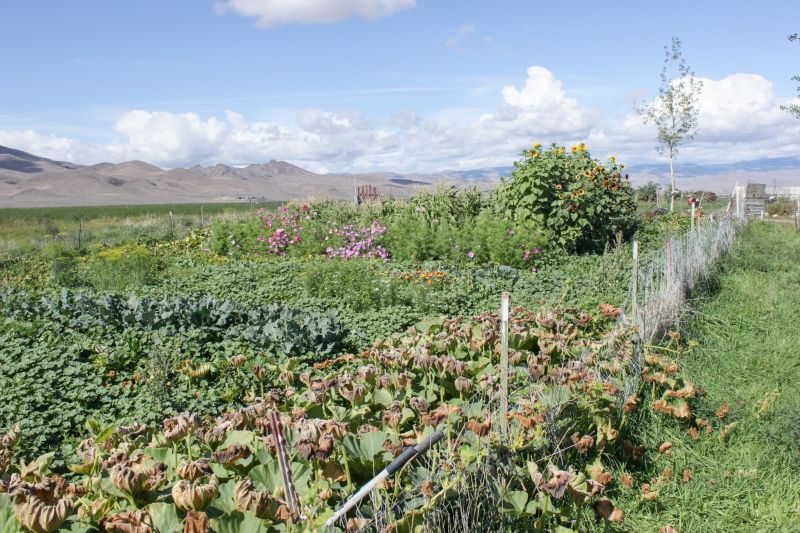
In February, we’ll pull out the Fedco seed catalog and drool over Bright Lights chard, Chioggia beets, Scarlet Kale, Crackerjack marigolds, and Clarke’s Heavenly Blue morning glories. In the dark days of winter, it turns out even names can add color to life.
As November winds rustle the dead sunflowers, and the leaves on the cottonwood trees clap like many hands, there will be gifts from the land on our shelves and in our freezers.
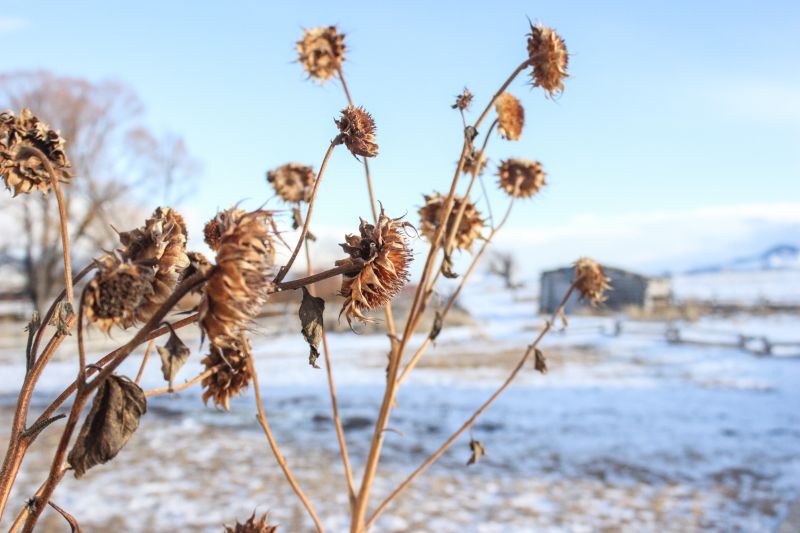
There are bales of hay in the stackyard for the cattle, bouquets of blooms and grass, the sweetness of summer preserved. When you walk down the narrow aisle between the stacks, the howling wind is muffled. It is quiet. Dwarfed as you are, by the stacks towering above your head, you feel the almost cathedral presence of the hay. There is a fragrance in that hushed place. It is the fragrance of green earth and blue sky, of tannic dandelions, peppery alfalfa, and honeyed clover.
The haystack is like a thick book full of pressed flowers. It is a memory book for my sisters and me. Even when we are adults, flung into the world of taxes, marriage, college and insurance, we can still find magic there.
In our freezers and pantries, there will be hams and bacon, roasts and bones, in which the memory of summer is so miraculously, so intricately bound up.
For Melanie and Linnaea, my crew-boss-cattle-herder sisters, there will be memories of range-days. They will think of long days following the spider web trails in the mountains. Man-sweat and horse-sweat, hair and leather between their fingers. There will be smell memories of crushed sagebrush, greasewood, and rabbit-brush. Memories of nights in weather-tossed and rain beaten tents, of hot coffee cups in cold fingers.
For Ethan and I, raising pastured pigs, there will be memories of carpets of clover, barking pigs, the swarm of coarse-haired, heavy bodies sniffing our boots and hands. Memories of a little girl with pigtails, beeping the horn in her “Big Red Truck”.

There will be squashes and carrots, elderberries and apricots, a brightness of color and flavor even as the land is empty, wind-scoured, and lonely.
Somehow, in that sustenance, in the simple package of calories of food, there is a story told.
It is a profound mystery that through the simple act of harvesting the bounty, we are harvesting our memories as well.
I told a friend of mine that summertime is the “wealthy, starving time.” The blackbirds tell us, “Hurry up!” and we do. Each candle is burned at both ends. “There is so much to be done,” we tell ourselves, “summer is short.” The days are long, but the time is short. So it is. In this country, summer passes in the blink of an eye, in the closing of a gate, in the swirling of a dust devil.
It is not until now, when the grass withers, and our mountain pastures are clogged with snow, that we stop and think about the summer that is over. There is a yearning for it, a clawing at the time gone by. That’s just human nature.
Even as we’re thinking, “we should have done this,” or “we should have finished that.” Now it’s too late, the memories come trickling back into our minds. Along with the memory comes the reason why we’re here. Along with the memory comes gratitude, for everything the land has given us.
In our cold winters, in those sunless days, there is warmth. It is the abundance of summer, perfectly captured in every bite we eat.
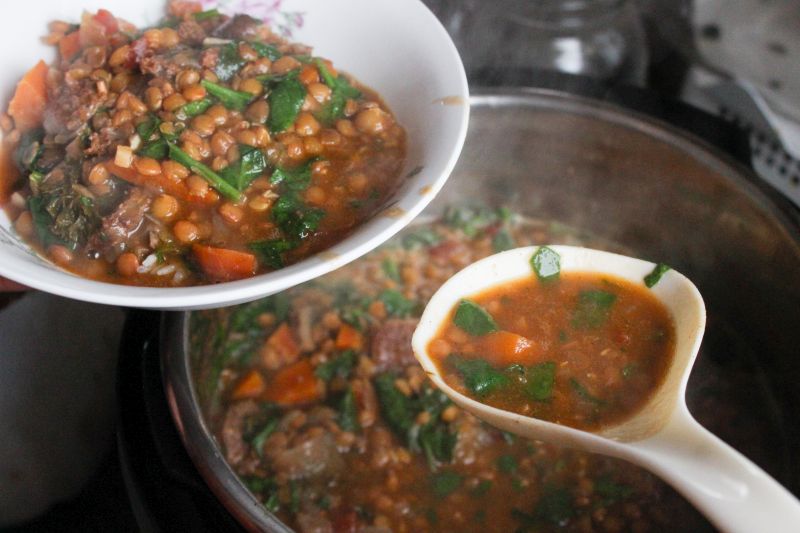






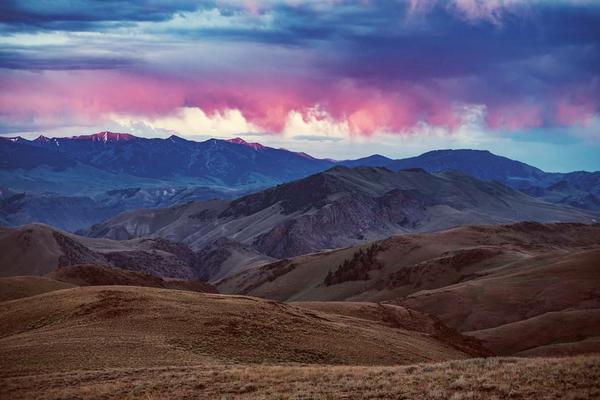
Susanne
Abby, thanks for sharing your bounty and nurturing gratitude. You are a good writer! You make me think of my beloved grandmother, an amazing gardener, cook, and nurturer.
Annette Lewis
Abby,
It’s great to read your writing about life on the ranch. I remember you from the place where you lived in Tendoy, when you were a little girl and I was your mom’s midwife.
I have written many, many stories about my midwifery experiences from the areas i, which you grew up. I really hope to one day publish them. Best wishes to you!!
Caryl Elzinga
Best wishes to you too, Annette! The three babies you delivered are now strong, healthy, beautiful teenagers 🙂 I remember some of your stories. They would make a great book! -Caryl